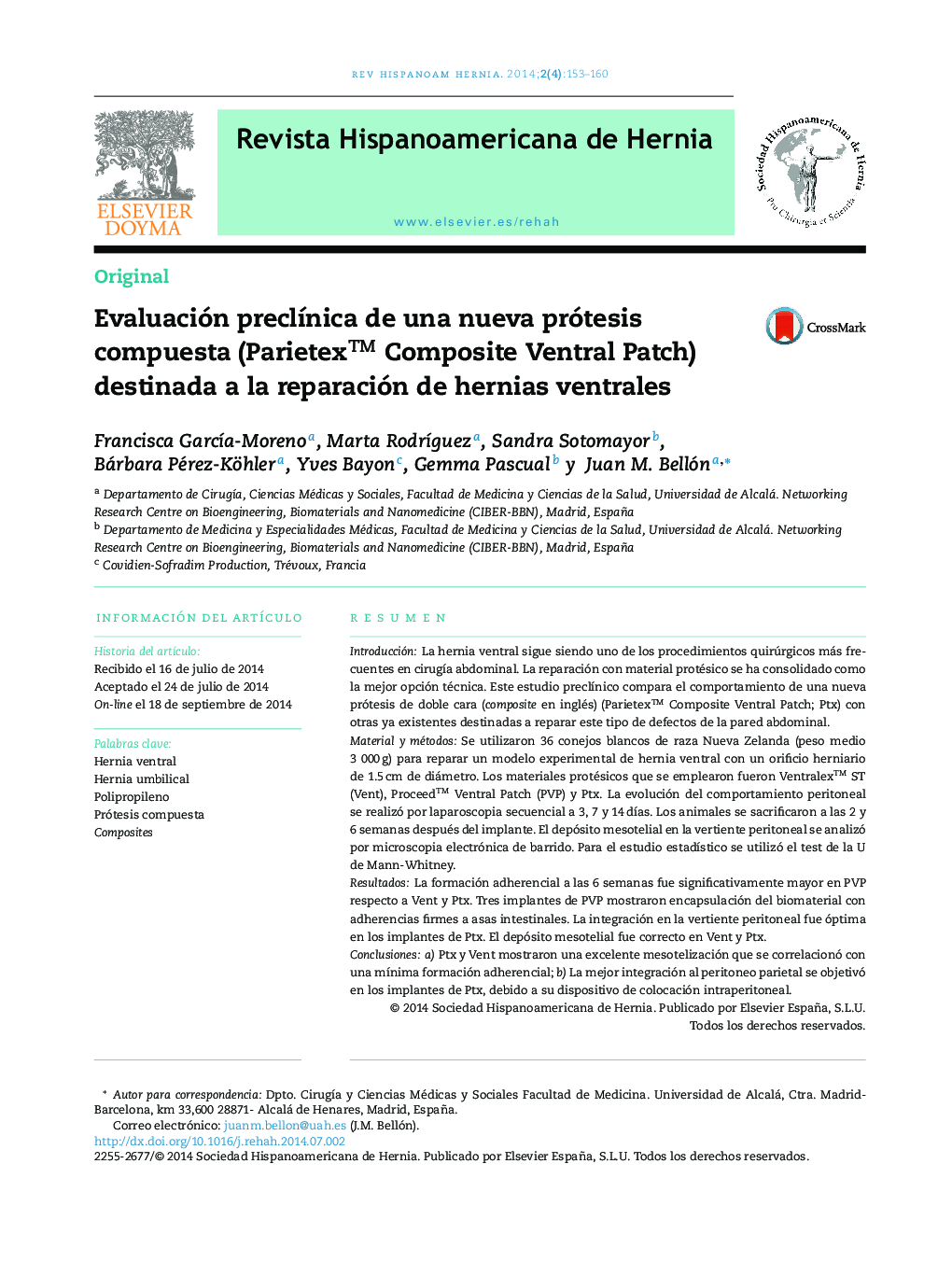| Article ID | Journal | Published Year | Pages | File Type |
|---|---|---|---|---|
| 4306120 | Revista Hispanoamericana de Hernia | 2014 | 8 Pages |
ResumenIntroducciónLa hernia ventral sigue siendo uno de los procedimientos quirúrgicos más frecuentes en cirugía abdominal. La reparación con material protésico se ha consolidado como la mejor opción técnica. Este estudio preclínico compara el comportamiento de una nueva prótesis de doble cara (composite en inglés) (Parietex™ Composite Ventral Patch; Ptx) con otras ya existentes destinadas a reparar este tipo de defectos de la pared abdominal.Material y métodosSe utilizaron 36 conejos blancos de raza Nueva Zelanda (peso medio 3 000 g) para reparar un modelo experimental de hernia ventral con un orificio herniario de 1.5 cm de diámetro. Los materiales protésicos que se emplearon fueron Ventralex™ ST (Vent), Proceed™ Ventral Patch (PVP) y Ptx. La evolución del comportamiento peritoneal se realizó por laparoscopia secuencial a 3, 7 y 14 días. Los animales se sacrificaron a las 2 y 6 semanas después del implante. El depósito mesotelial en la vertiente peritoneal se analizó por microscopia electrónica de barrido. Para el estudio estadístico se utilizó el test de la U de Mann-Whitney.ResultadosLa formación adherencial a las 6 semanas fue significativamente mayor en PVP respecto a Vent y Ptx. Tres implantes de PVP mostraron encapsulación del biomaterial con adherencias firmes a asas intestinales. La integración en la vertiente peritoneal fue óptima en los implantes de Ptx. El depósito mesotelial fue correcto en Vent y Ptx.Conclusionesa) Ptx y Vent mostraron una excelente mesotelización que se correlacionó con una mínima formación adherencial; b) La mejor integración al peritoneo parietal se objetivó en los implantes de Ptx, debido a su dispositivo de colocación intraperitoneal.
IntroductionVentral hernia repair is among the most frequently performed abdominal surgery procedures. The use of a prosthetic material is today the first-line treatment. This preclinical study compares the postimplant behavior of a new composite mesh (Parietex™ Composite Ventral Patch; Ptx) with that of existing meshes used to repair this type of abdominal wall defect.Materials and methodsThirty six New Zealand White rabbits (mean weight 3000 g) were used in a ventral hernia repair model with a hernial orifice 1.5 cm in diameter. The prosthetic materials tested were: Ventralex™ ST (Vent), Proceed™ Ventral Patch (PVP) and Ptx. Peritoneal behavior was monitored over time by sequential laparoscopy performed at 3, 7 and 14 days postimplant. Animals were sacrificed 2 and 6 weeks after implant. Mesothelial deposition at the peritoneal interface was examined by scanning electron microscopy. The Mann-Whitney test was used for the statistical treatment of data.ResultsAdhesion formation at 6 weeks postimplant was significantly greater for the PVP meshes compared with Vent and Ptx. Three PVP implants showed the encapsulation of seroma along with firm adhesions to the intestinal loops. Host tissue incorporation on the peritoneal side of the abdominal wall was optimal for the Ptx meshes. Good mesothelial deposition was observed for Vent and Ptx.Conclusionsa) Ptx and Vent showed excellent mesothelialization which was correlated with minimal adhesion formation;b) the Ptx implants showed the best incorporation in the parietal peritoneum due to its efficient intraperitoneal deployment device.
